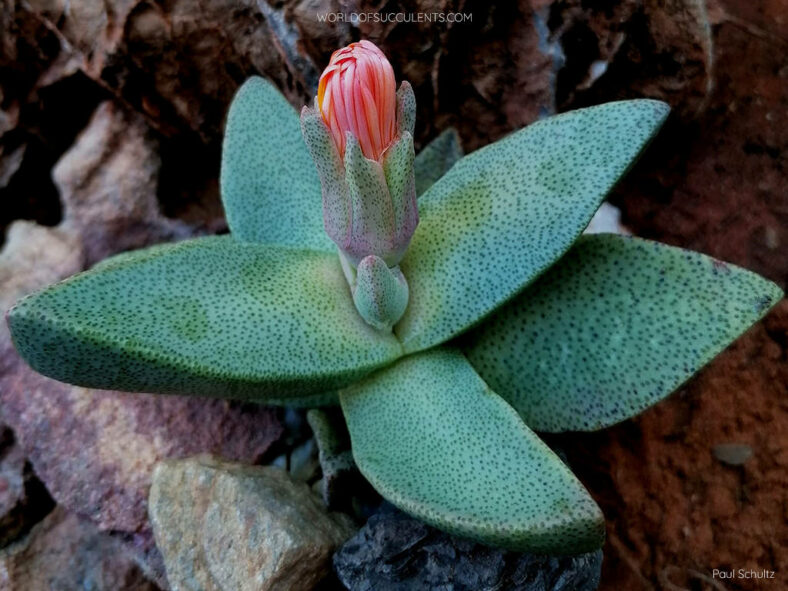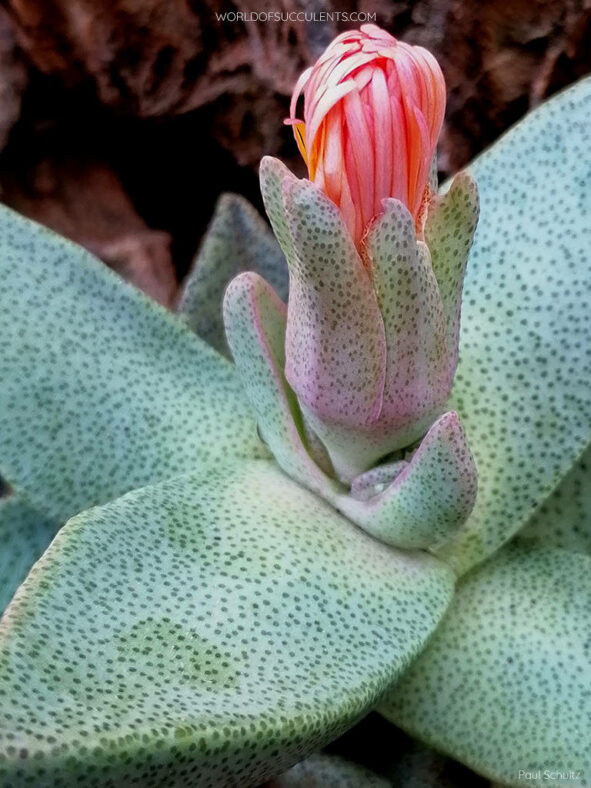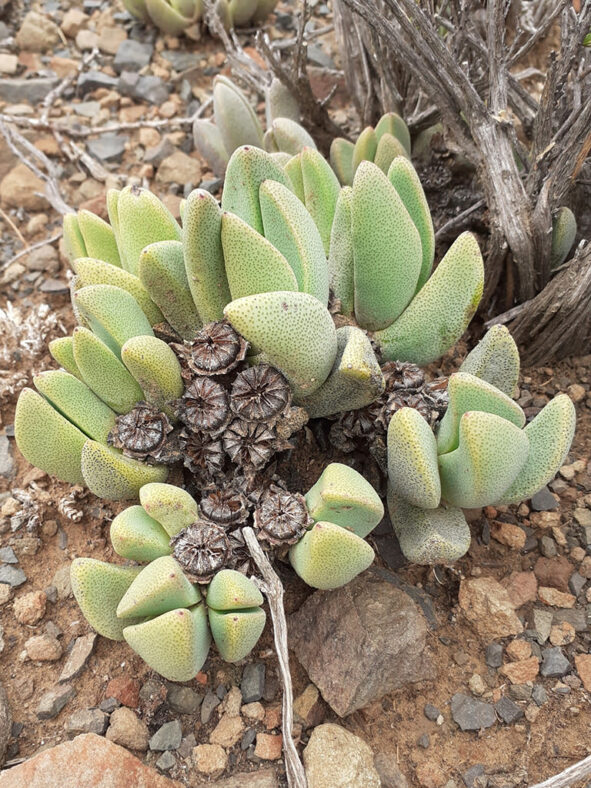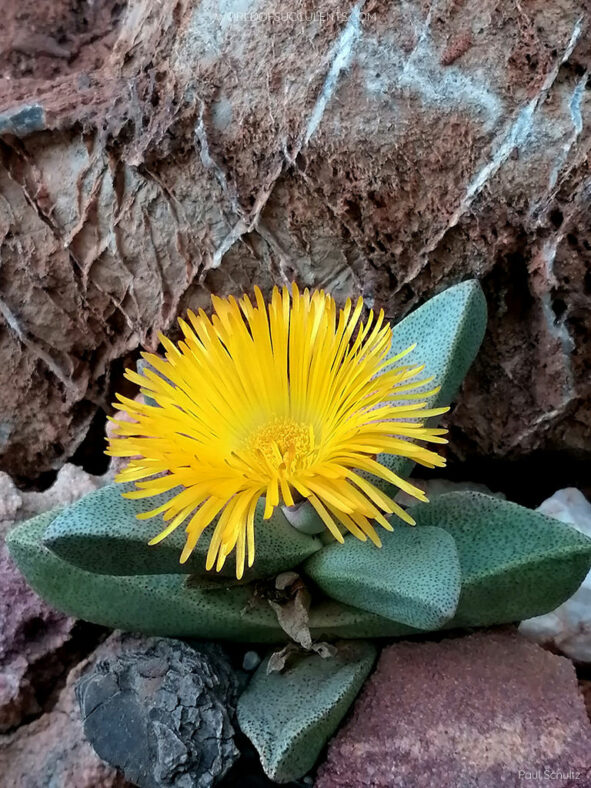Pleiospilos compactus subsp. canus is a cute succulent distinguished from Pleiospilos compactus subsp. compactus by its fruits generally having 12 locules instead of 10.
Scientific Name
Pleiospilos compactus subsp. canus (Haw.) H.Hartmann & Liede
Common Name(s)
Mimicry Plant, Split Rock, Stone Plant
Synonym(s)
Bijlia cana, Mesembryanthemum canum, Pleiospilos canus, Punctillaria cana
Scientific Classification
Family: Aizoaceae
Subfamily: Ruschioideae
Tribe: Ruschieae
Genus: Pleiospilos
Etymology
The subspecific epithet "canus (pronounced KAN-us) means "white, hoary" and possibly refers to the pale leaves of this plant that are often more creamy grey than gray-green.
Origin
Pleiospilos compactus subsp. canus is native to South Africa. This subspecies occurs in barren stony slopes and outcrops in the Great Karoo from Calvinia in the Northern Cape to the Little Karoo in the Western Cape and eastwards into semi-arid parts of the Eastern Cape. However, some records place this plant in the Bloemfontein area in the Free State province.
Description
Pleiospilos compactus subsp. canus is a dwarf succulent with pairs of two fleshy, quite thick leaves growing opposite each other and fused at the base. It produces up to three leaf pairs per branch, forming a small clump. The lumpy leaves are gray-green with scattered dark dots and often flushed with pink. They are triangular in cross-section and can grow up to 2 inches (5 cm) long and 0.8 inches (2 cm) wide. The plant produces new leaves annually, letting the old ones dry and disappear in their own time.
During late fall and winter, the yellow flowers appear between the paired leaves on very short or no stalks. The flowers are solitary and have over 80 yellow or pale yellow, narrowly paddle-shaped petals, sometimes white near the base. They open only in the afternoon and can reach up to 1.2 inches (3 cm) in diameter. Once the flowers start to wither, their color changes to orange. The fruits are usually 12-locular capsules that contain ovoid, dark brown seeds.

How to Grow and Care for Pleiospilos compactus subsp. canus
Light: This succulent requires bright light but not too much direct sunlight. So, a windowsill that receives 4 to 5 hours of direct sunlight in the morning and partial shade in the afternoon will be a perfect spot for indoor growing.
Soil: Pleiospilos compactus subsp. canus thrives in porous soil that allows water to drain away quickly. Therefore, use commercial soil for succulents or make your own well-draining mix.
Temperature: High temperatures are not a problem as long as there is plenty of fresh air, but this plant is not cold-hardy. It grows best in USDA Plant Hardiness Zones 9b to 11b, with average minimum winter temperatures ranging from 25 to 50 °F (-3.9 to 10 °C).
Watering: To keep your plant healthy, it is important to know when, how much, and how often to water. During the dormant period, usually in summer, Pleiospilos compactus subsp. canus requires little or no water. Once it grows again in the fall, water thoroughly but allow the soil to dry between waterings.
Fertilizing: As long as you repot this plant every two years, it does not need fertilizer.
Repotting: Even if your plant can stay happy in the same pot for years, you can repot it occasionally to give it more space during the growing season. However, the best time is at the beginning of the season.
Propagation: Although it is usually started from seeds, Pleiospilos compactus subsp. canus can also be easily propagated by division. The best time to divide the plant is late summer, just before dormancy begins to break, while fall is ideal for sowing the seeds.
Learn more at How to Grow and Care for Mesembs.
Toxicity of Pleiospilos compactus subsp. canus
Pleiospilos compactus subsp. canus is considered non-toxic, so having it around kids and pets is safe.
Links
- Back to genus Pleiospilos
- Succupedia: Browse succulents by Scientific Name, Common Name, Genus, Family, USDA Hardiness Zone, Origin, or cacti by Genus
Photo Gallery
Click on a photo to see a larger version.


